In the face of the climate crisis, the role of energy systems in building design has come under increasingly scrutiny. Buildings are not only significant energy consumers but also major contributors to greenhouse gas emissions. As we grapple with rising global temperatures and rising urbanization, the focus on creating energy efficient buildings which rely on clean, renewable energy sources has become an paramount focus of building design. The challenge lies in creating comfortable indoor environments while minimizing fossil fuel use to power the multiple uses of an industrial and residential building plot.
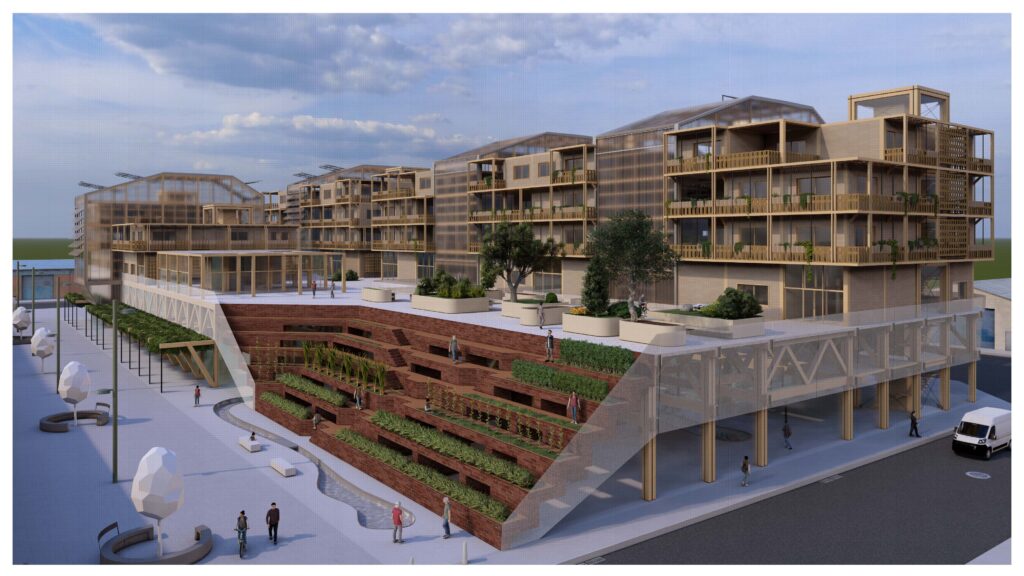
The energy consumption was calculated for the multiple industrial and residential uses in our plot, helping us understand our energy demand before designing effective energy systems to support this through renewable means.
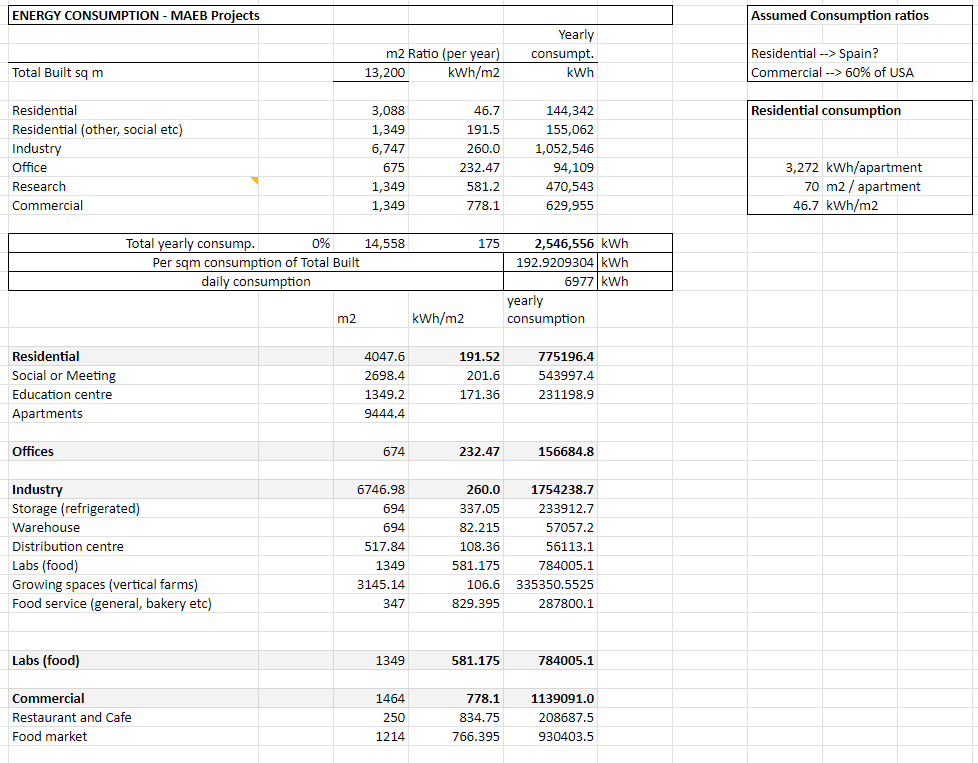
Despite the many benefits of urban vertical growing – including reducing carbon impact of transportation, minimising use of fossil-fuel based fertiliser and minimising water use – one of the key drawbacks is the energy consumption requirement to power the required water, cooling and filtration systems.
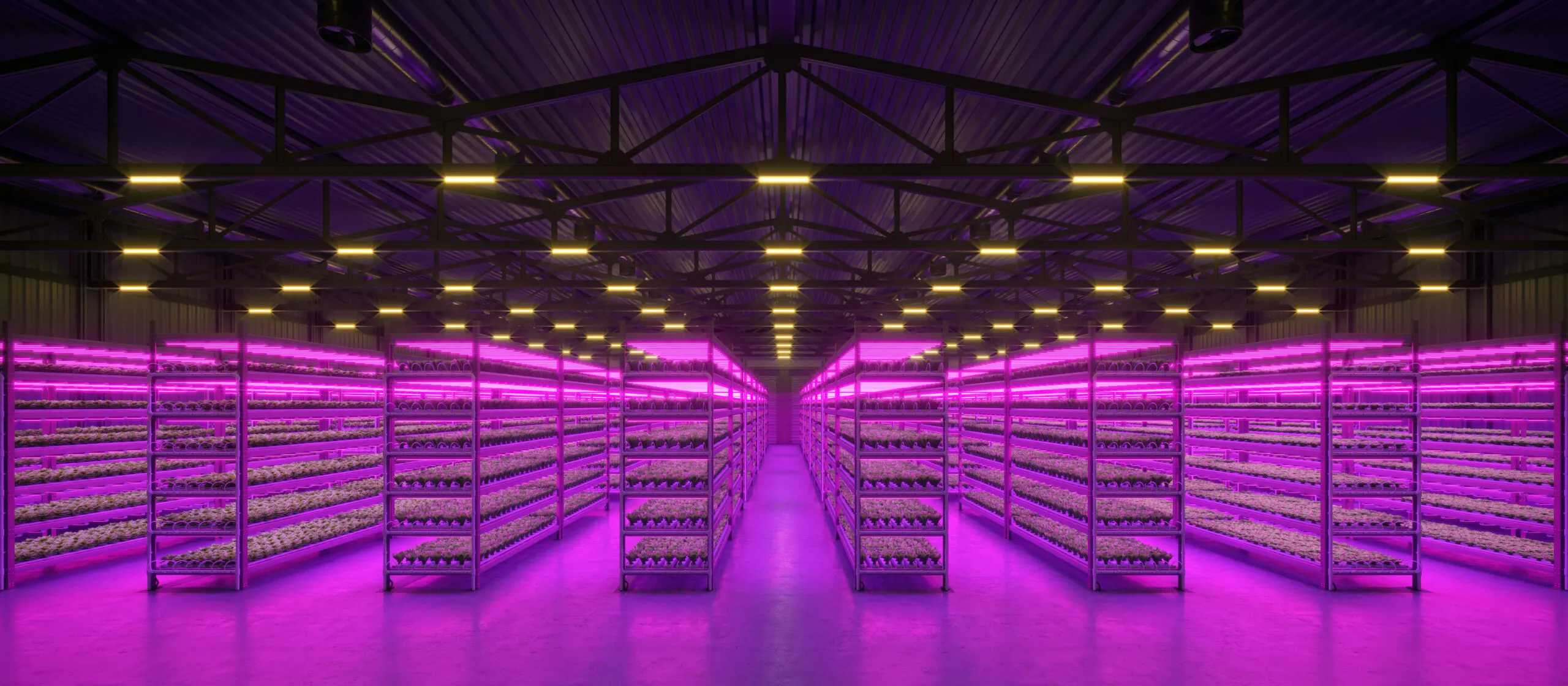
A review of Hydroponics and Conventional Agriculture Based on Energy and Water Consumption1 calculated that 106.6 kWh/m2 is consumer by hydroponic vertical farms. This consumption became the key area we sought to feed with clean energy, reducing the climate-changing impact of our urban food production.
The key energy input strategy to consider in the Mediterranean climate is that provided by solar radiation. Barcelona enjoys on average 2,400 hours of sunlight a year 2 and with modern Photovoltaic technology, that sunlight can be harnessed to provide a significant amount of our plots energy needs.
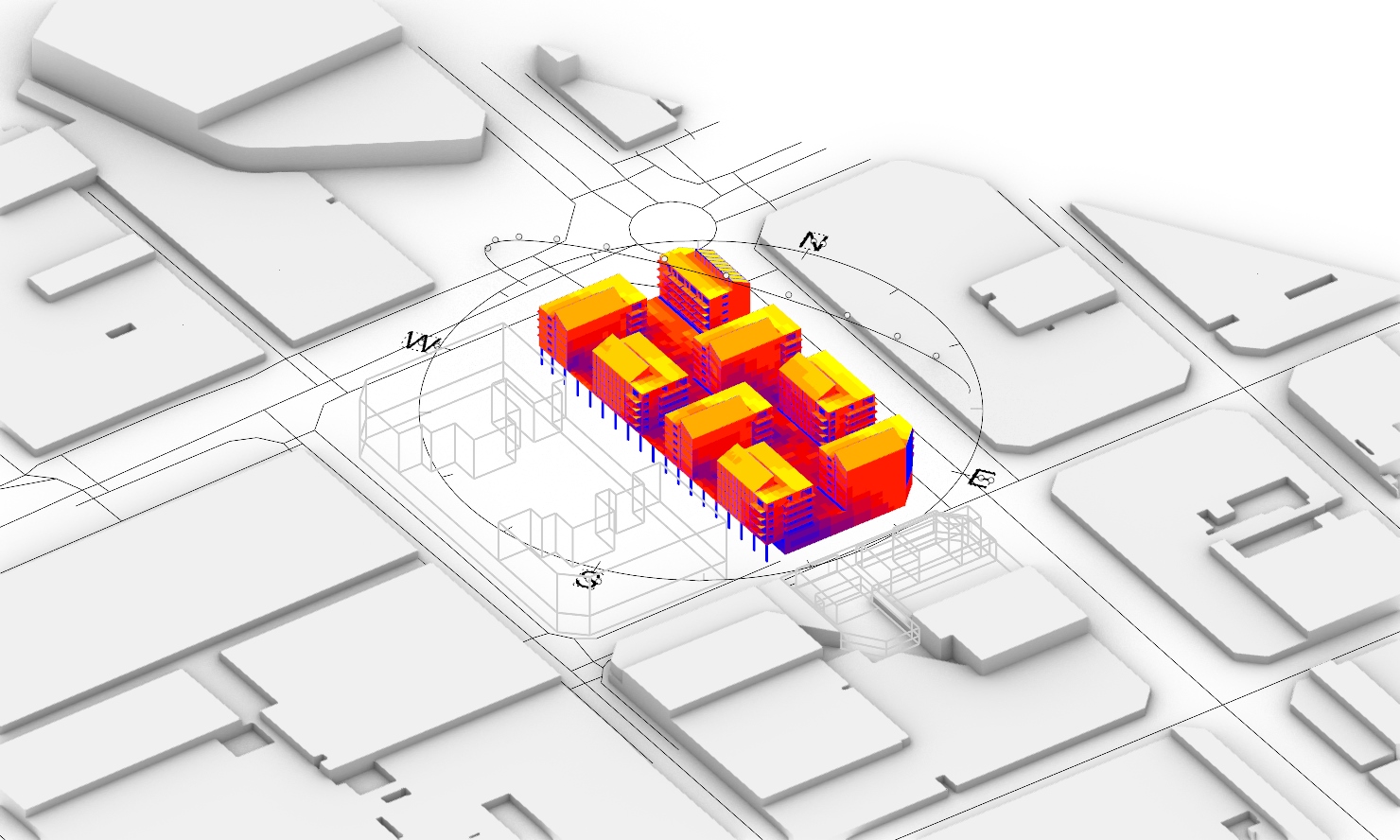
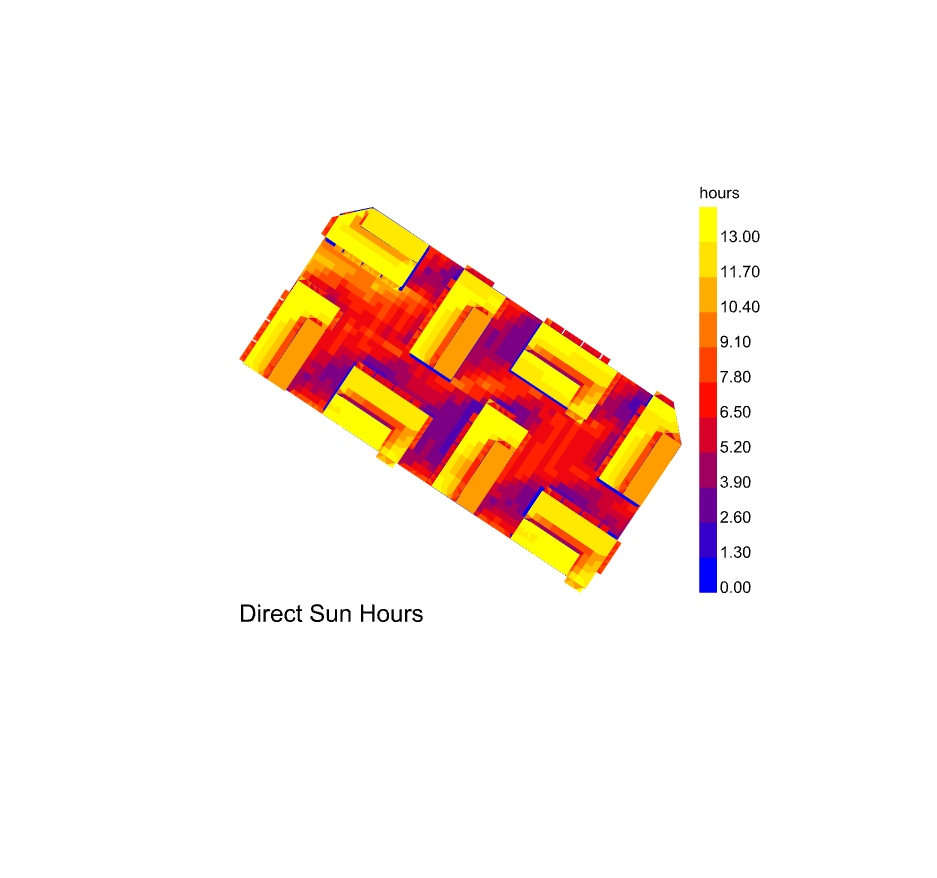
Our plot location and surrounding built environment affords the maximum amount of sunlight on our flat rooftop spaces, leading us to utilise a Photovoltaic planning to arrange panels effectively on our available footprint.
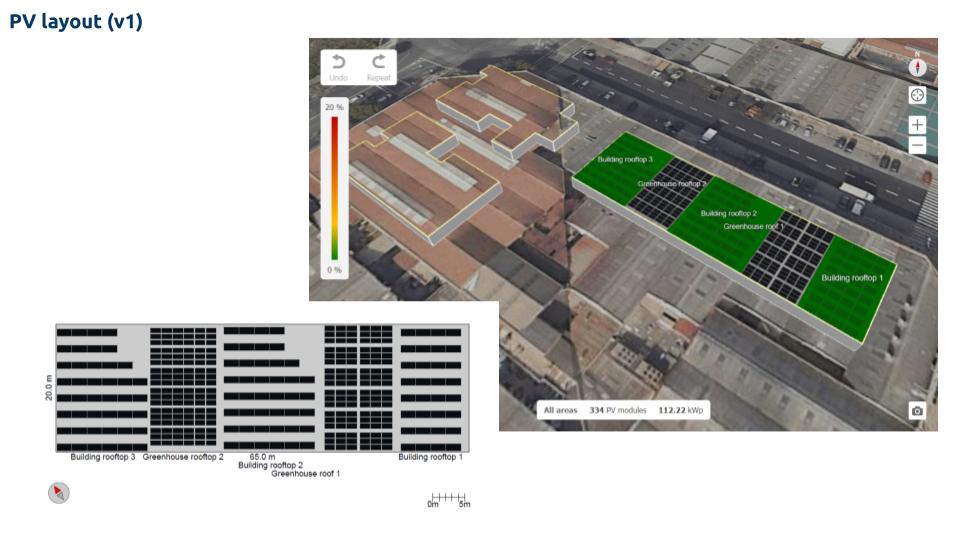
Key considerations like PV angle, self-shading, and shading from other building objects defined an optimised configuration of PV cells for our building design.
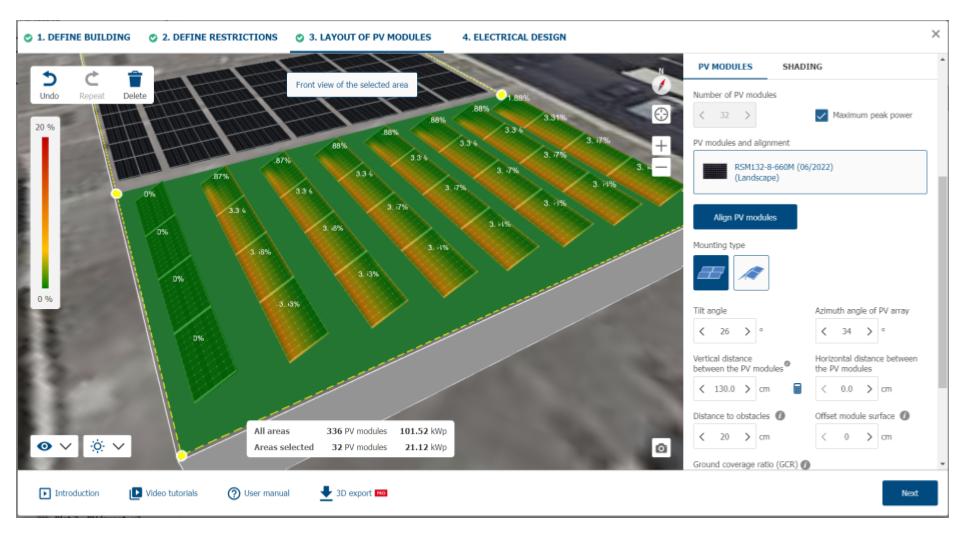
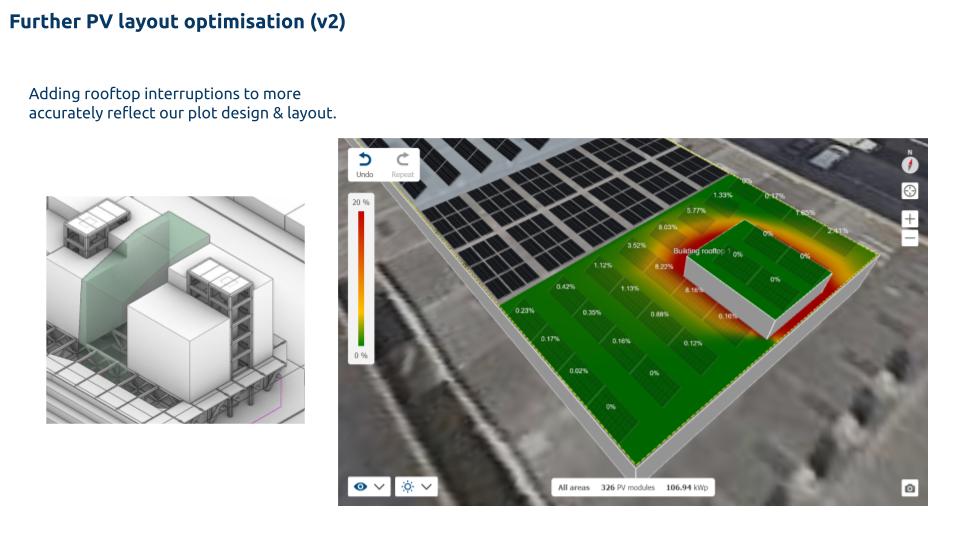
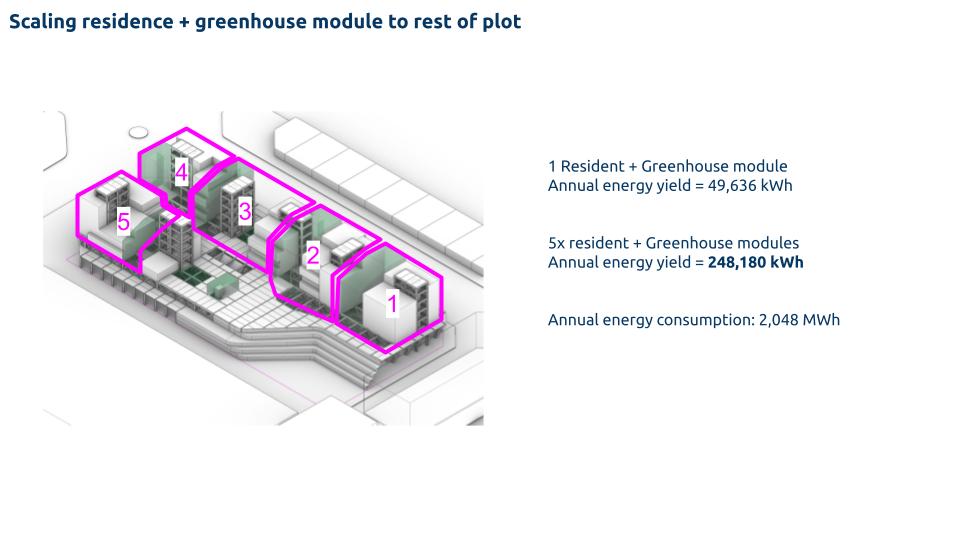
With a combination of maximum-yield PV cells selected for our resident rooftops, and partially porous panels utilised on our greenhouse rooftops, the energy production from solar panel for our plot combines to a total Annual Energy Yield of 248,180 kWh.
- https://www.mdpi.com/1996-1073/16/4/1690#:~:text=The%20review%20results%20showed%20that,water%20consumption%20reduction%2C%20and%20conservation. ↩︎
- Cities of the world with the most and fewest daylight hours | Endesa ↩︎

